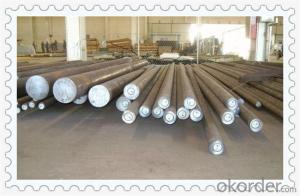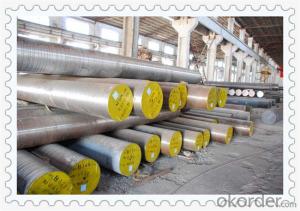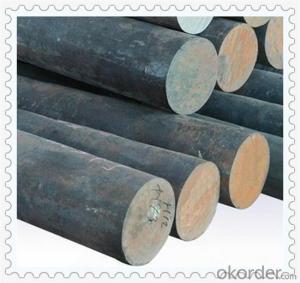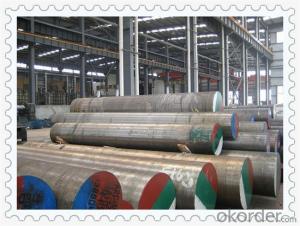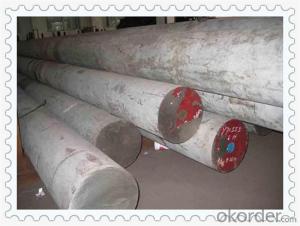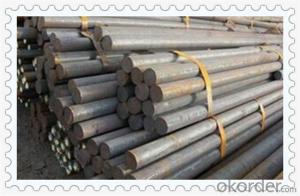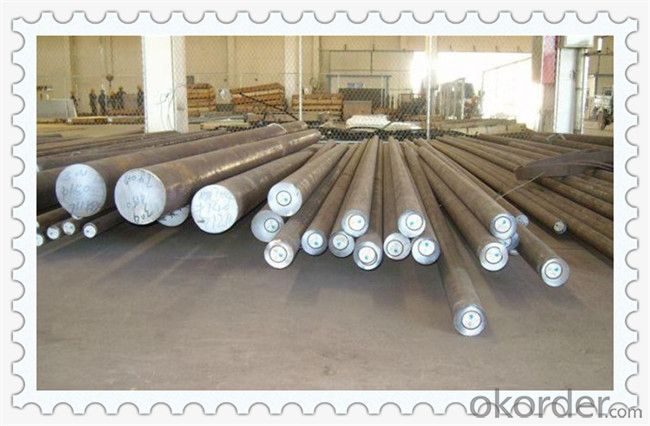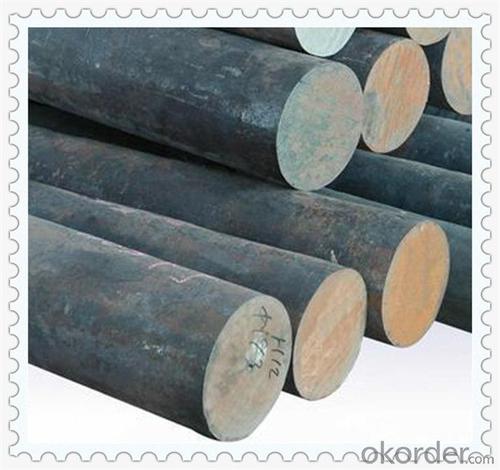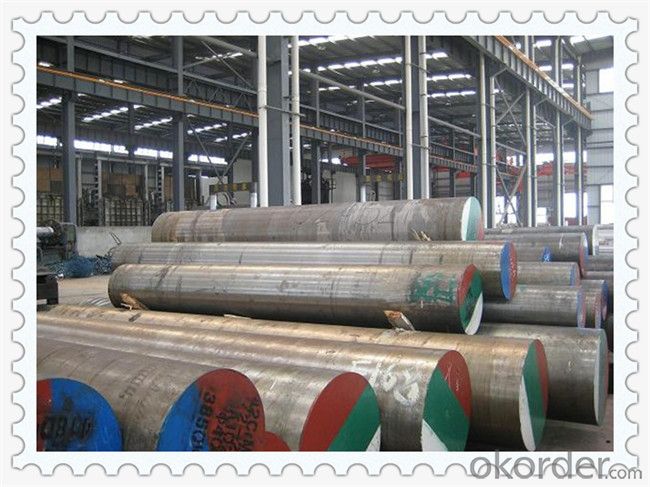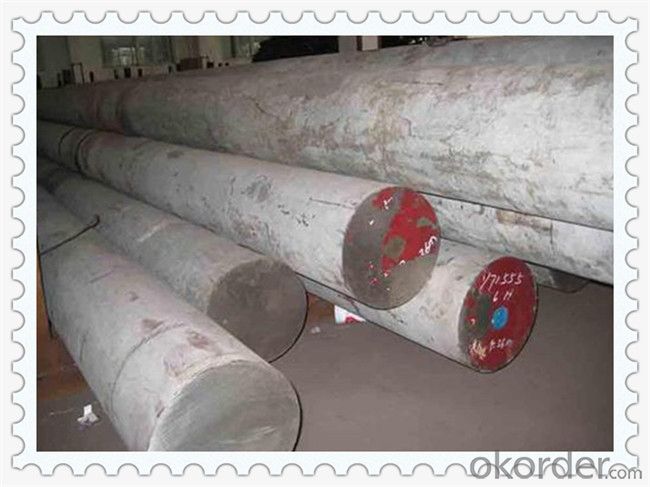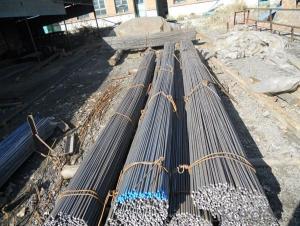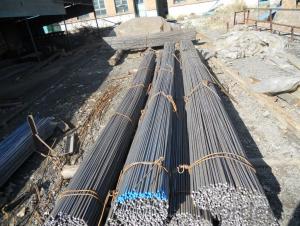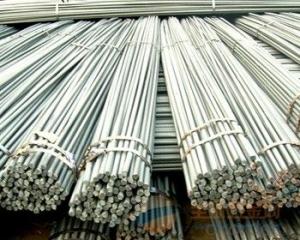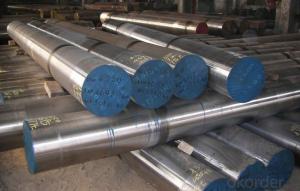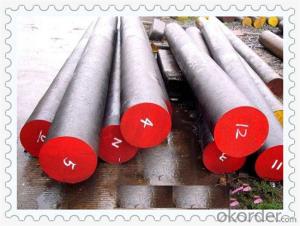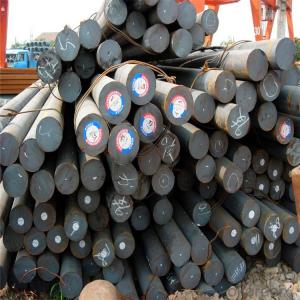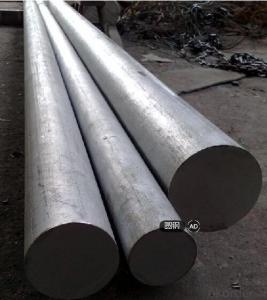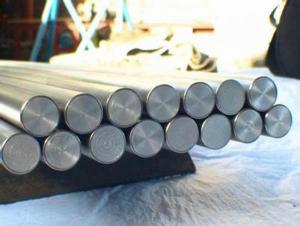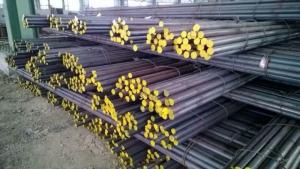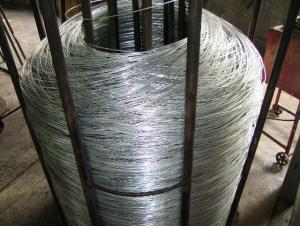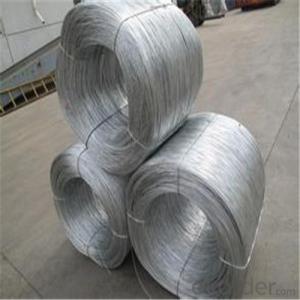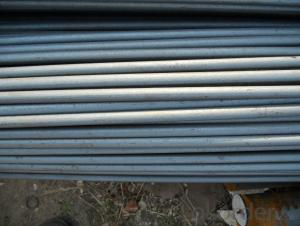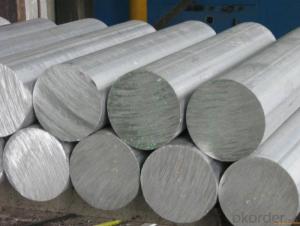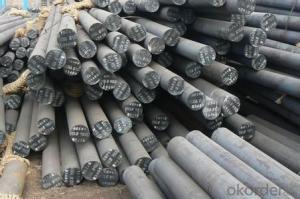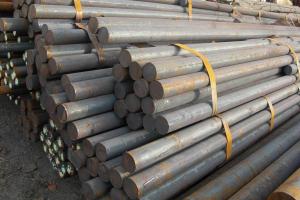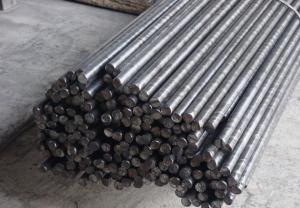Hot Dip Galvanized Steel Round Bar
- Loading Port:
- China main port
- Payment Terms:
- TT OR LC
- Min Order Qty:
- 5 m.t.
- Supply Capability:
- 100000 m.t./month
OKorder Service Pledge
Quality Product, Order Online Tracking, Timely Delivery
OKorder Financial Service
Credit Rating, Credit Services, Credit Purchasing
You Might Also Like
Specification
Standard:
AISI,JIS,GB,BS,DIN,API,EN,ASTM
Technique:
Hot Rolled,Cold Rolled,Cold Drawn,ERW,Forged,Saw,Extruded,EFW,Spring
Shape:
U Channel,Square,C Channel,Hexagonal,Round,Rectangular,Oval,LTZ
Surface Treatment:
Galvanized,Coated,Copper Coated,Color Coated,Oiled,Dry,Chromed Passivation,Polished,Bright,Black,PVDF Coated
Steel Grade:
Q195,Q215,Q235,Q215B,Q235B,RHB335,HRB400,200 Series,300 Series,400 Series,600 Series,SS400-SS490,10#,20#,A53(A,B)
Certification:
ISO,SGS,CE
Thickness:
as required
Length:
as required
Net Weight:
as required
Hot Dip Galvanized Steel Round Bar
| ITEM | Hot dip galvanized (HDG) steel round bar/hot dip galvanized bar steel | ||||
| Standard: | GB,ASTM,BS,JIS | Dimensions: | 10-200mm | Grade: | Q235,SS400,A36,S45,ST37 |
| Place of Origin: | Tianjin China (Mainland) | Brand Name: | HXT | Zinc coating thickness grade | GR.60~85,400~600g/m2 |
| Type: | hot rolled & cold drawn | Application: | building ,construction,machiniary | Trade Terms: | FOB,CIF,CFR |
| Payment: | T/T,L/C | Certificate: | ISO9001:2000,SGS,BV | Package: | Standard export package |
| Delivery Time: | 7-10 workdays | Shipping Port: | Xingang,Tianjin,China | Wall Thickness: | 10-200mm |
| Length: | 2~12.5m,as required | Technique: | Hot dip galvanizing GB/T13912/ASTM A123 | Productivity: | 10000 tons/month |
| Hot-dip galvanized steel round bars produced from hot rolled steel round bar or the cold drawn round bar,with the hot dip galvanizing process.The hot dip galvanized steel round bar has very good corrosion resistance performace,it's widely used in the industry of building,construction,photovoltaic solar energy, lightning protection system,fabrication and machiniary. | |||||
| size | kg/m | size | kg/m | size | kg/m |
| 5.5 | 0.186 | 28 | 4.83 | 75 | 34.7 |
| 6 | 0.222 | 29 | 5.18 | 80 | 39.5 |
| 6.5 | 0.26 | 30 | 5.55 | 85 | 44.5 |
| 7 | 0.302 | 31 | 5.92 | 90 | 49.9 |
| 8 | 0.395 | 32 | 6.31 | 95 | 55.6 |
| 9 | 0.499 | 33 | 6.71 | 100 | 61.7 |
| 10 | 0.617 | 34 | 7.13 | 105 | 68 |
| 11 | 0.746 | 35 | 7.55 | 110 | 74.6 |
| 12 | 0.888 | 36 | 7.99 | 115 | 81.5 |
| 13 | 1.04 | 38 | 8.9 | 120 | 88.8 |
| 14 | 1.21 | 40 | 9.86 | 125 | 96.3 |
| 15 | 1.39 | 42 | 10.9 | 130 | 104 |
| 16 | 1.58 | 45 | 12.5 | 140 | 121 |
| 17 | 1.78 | 48 | 14.2 | 150 | 139 |
| 18 | 2 | 50 | 15.4 | 160 | 158 |
| 19 | 2.23 | 53 | 17.3 | 170 | 178 |
| 20 | 2.47 | 55 | 18.6 | 180 | 200 |
| 21 | 2.72 | 56 | 19.3 | 190 | 223 |
| 22 | 2.98 | 58 | 20.7 | 200 | 247 |
| 23 | 3.26 | 60 | 22.2 | 210 | 272 |
| 24 | 3.55 | 63 | 24.5 | 220 | 298 |
| 25 | 3.85 | 65 | 26 | 230 | 326 |
| 26 | 4.17 | 68 | 28.5 | 240 | 355 |
| 27 | 4.49 | 70 | 30.2 | 250 | 385 |
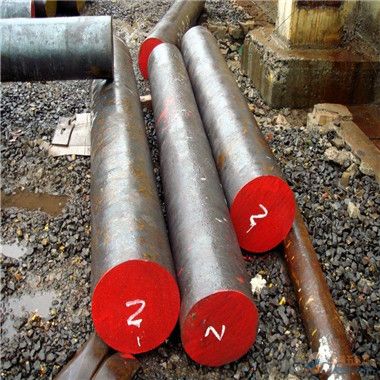
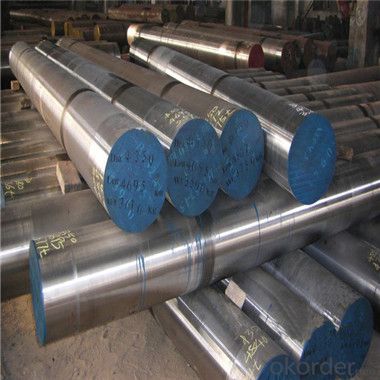
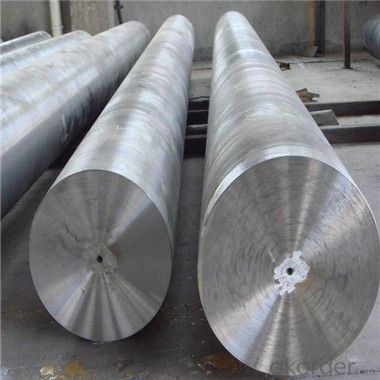
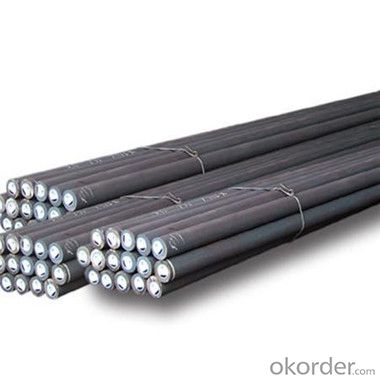
- Q: What are the considerations for selecting the right steel grade for a round bar?
- There are various factors to consider when choosing the appropriate steel grade for a round bar. To begin with, the intended application of the round bar should be taken into account. Different steel grades possess distinct properties that make them suitable for specific purposes. For instance, stainless steel or high-alloy steel, which have exceptional heat resistance, would be ideal for use in high-temperature environments. Conversely, carbon steel, with its good strength and ductility, may be more appropriate for structural applications. Another factor to consider is the desired mechanical properties of the round bar, including tensile strength, yield strength, hardness, and toughness. These properties can vary significantly among different steel grades, so it is crucial to select a grade that meets the specific requirements of the application. Corrosion resistance is also an important consideration. If the round bar will be exposed to corrosive environments, such as in marine or chemical applications, it is advisable to choose a stainless steel grade with high resistance to corrosion. On the other hand, if corrosion resistance is not a major concern, a carbon steel grade may be more cost-effective. Cost is another factor to be taken into account. Different steel grades have varying costs based on availability, demand, and manufacturing processes. It is important to strike a balance between the desired properties of the round bar and the available budget to ensure cost-effectiveness. Moreover, the manufacturability of the steel grade should be considered. Some steel grades may be more challenging to machine or weld, which can impact the production process and cost. It is crucial to select a readily available steel grade that can be easily processed to meet the required specifications. Finally, it is always advisable to seek guidance from steel suppliers, engineers, or metallurgists to ensure that the chosen steel grade aligns with the specific requirements of the application. Their expertise and experience in the industry can provide valuable insights and recommendations.
- Q: How do steel round bars perform in high-pressure applications?
- Steel round bars perform well in high-pressure applications due to their high tensile strength and excellent resistance to deformation. They are able to withstand the extreme forces and pressures without compromising their structural integrity. Additionally, steel round bars also exhibit good corrosion resistance, making them suitable for various high-pressure environments, such as hydraulic systems, pressure vessels, and pipelines.
- Q: What are the different types of steel round bar alloys for improved machinability and strength?
- Improved machinability and strength can be achieved with several variations of steel round bar alloys. These alloys are designed specifically for industries where efficient machining and high tensile strength are essential. Here are some of the popular alloys used: 1. 12L14: This alloy incorporates lead, functioning as a lubricant during machining. This results in improved chip formation and reduced tool wear. Its exceptional machinability and good strength make it ideal for applications involving intricate machining processes. 2. 4140: Known as "chromoly" steel, this alloy contains chromium and molybdenum, which enhance its strength and hardenability. It is extensively used in applications that demand high tensile strength, such as automotive parts, shafts, and gears. 3. 8620: This low-alloy nickel-chromium-molybdenum steel offers a combination of high strength and good toughness. It can be easily machined and is commonly employed in case-hardening applications like gears, shafts, and fasteners. 4. 1018: Referred to as "cold-rolled" or "cold-finished" steel, 1018 is a low-carbon alloy with good machinability and weldability. It finds common usage in applications requiring precise and smooth finishes, such as bolts, screws, and hydraulic fittings. 5. 52100: This high carbon, chromium-bearing steel is primarily used for manufacturing bearings and other high-wear applications. It offers excellent hardness, wear resistance, and machinability, making it suitable for components necessitating strength and durability. These examples illustrate the range of steel round bar alloys available to enhance machinability and strength. The choice of alloy depends on specific application requirements, including desired strength, machinability, and durability. Consulting with a materials engineer or supplier can assist in identifying the most suitable alloy for a particular use case.
- Q: What are the different surface finishes for stainless steel round bars?
- There are several different surface finishes available for stainless steel round bars, including bright annealed, mill finish, brushed, polished, and satin. Each finish offers a distinct appearance and level of smoothness, allowing for various aesthetic and functional preferences.
- Q: What is the elongation of a steel round bar?
- The elongation of a steel round bar refers to the amount it stretches or deforms when subjected to a tensile force. It is a measure of the bar's ability to withstand tension and is typically expressed as a percentage of the original length. The elongation is determined by the material properties of the steel, including its composition, grain structure, and heat treatment. Factors such as the applied force, temperature, and speed of loading also influence the elongation. Steel round bars generally exhibit a significant elongation before reaching their breaking point, making them suitable for structural applications that require high strength and ductility.
- Q: What is the maximum elongation of steel round bars?
- The maximum elongation of steel round bars may vary based on the particular grade and composition of the steel. Nonetheless, typically, the maximum elongation for steel round bars hovers around 20-30% of their original length. Consequently, these bars can stretch or elongate by up to 20-30% before reaching their breaking point or ultimate tensile strength. It is worth mentioning that this maximum elongation is influenced by several factors, including steel quality, manufacturing process, and any heat treatment employed on the bars. Therefore, it is advisable to refer to the manufacturer's specific specifications and consider the intended application of the steel round bars in order to establish the maximum elongation for a specific case.
- Q: How can a round steel weld on a flat steel plate be flat and qualified?
- On both sides of the steel and welded steel plate, each side of the weld length of 5 times the diameter of reinforcement, welding seam should be welded into a convex arc that is.
- Q: What are the different types of steel round bar surface treatments for improved hardness?
- There are several different types of steel round bar surface treatments that can be used to improve hardness. These treatments are designed to enhance the strength and durability of the steel, making it more resistant to wear and tear. Some of the common surface treatments for improved hardness include: 1. Heat Treatment: This is a widely used method where the steel round bar is heated to a specific temperature and then cooled rapidly to alter its microstructure. This process can increase the hardness of the steel, making it suitable for applications that require high strength and toughness. 2. Nitriding: Nitriding involves exposing the steel round bar to a nitrogen-rich environment at high temperatures. This treatment forms a hard layer of nitrides on the surface of the steel, enhancing its hardness, wear resistance, and fatigue life. 3. Carbonitriding: Similar to nitriding, carbonitriding involves introducing both carbon and nitrogen into the steel round bar's surface. This treatment creates a hard and wear-resistant layer while maintaining a tough core. Carbonitriding is commonly used for applications that require a combination of hardness and toughness. 4. Induction Hardening: In this process, the steel round bar is heated through electromagnetic induction and then rapidly cooled. This treatment selectively hardens the surface of the steel, leaving the core relatively unaffected. Induction hardening is effective in improving the hardness and wear resistance of specific areas, such as gears or shafts. 5. Chroming: Chrome plating is a surface treatment method where a layer of chromium is deposited onto the steel round bar's surface. This treatment provides excellent hardness, corrosion resistance, and wear resistance. Chroming is commonly used for applications exposed to harsh environments or for parts that require a smooth and hard surface. 6. Shot Peening: Shot peening involves bombarding the steel round bar's surface with tiny metal or ceramic particles at high speed. This treatment induces compressive stress, which improves the material's hardness, fatigue strength, and resistance to crack initiation and propagation. It is important to note that the choice of surface treatment for improved hardness depends on the specific requirements of the application, the type of steel used, and the desired mechanical properties. Consulting with a materials engineer or specialist is recommended to determine the most suitable treatment for a particular steel round bar.
- Q: Can steel round bars be used in the manufacturing of automotive parts?
- Yes, steel round bars can be used in the manufacturing of automotive parts. Steel round bars are commonly used in the automotive industry due to their high strength, durability, and versatility. They can be machined, welded, and formed into various shapes to create components such as axles, shafts, suspension parts, and engine components. Steel round bars provide the necessary strength and stability required for automotive applications, making them a reliable choice for manufacturing automotive parts.
- Q: What is the maximum phosphorus content allowed for steel round bars?
- The maximum phosphorus content allowed for steel round bars varies depending on the specific steel grade and industry standards. However, in general, the phosphorus content in steel round bars is typically limited to a maximum of 0.04% to 0.05%. This limitation is imposed to ensure the desired mechanical properties, such as strength, toughness, and ductility, of the steel product. Higher phosphorus content can negatively impact these properties and may lead to reduced weldability, increased brittleness, and decreased corrosion resistance. Therefore, manufacturers and regulatory bodies set strict limits on phosphorus content to ensure the quality and performance of steel round bars in various applications. It is important to consult relevant industry standards or specifications to determine the specific maximum phosphorus content allowed for a particular steel grade or application.
Send your message to us
Hot Dip Galvanized Steel Round Bar
- Loading Port:
- China main port
- Payment Terms:
- TT OR LC
- Min Order Qty:
- 5 m.t.
- Supply Capability:
- 100000 m.t./month
OKorder Service Pledge
Quality Product, Order Online Tracking, Timely Delivery
OKorder Financial Service
Credit Rating, Credit Services, Credit Purchasing
Similar products
Hot products
Hot Searches
Related keywords
